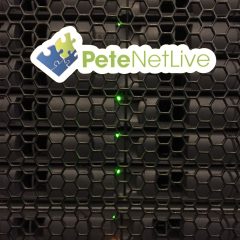In Place Upgrade of Window Server
In Place Upgrade KB ID 0001895 Problem An in-place upgrade of a Windows Server, where you update an existing server installation to a newer version without reinstalling from scratch, can be a powerful way to bring older infrastructure up to date without the lengthy process of rebuilding a system and restoring data. The allure of this method lies in its simplicity and time efficiency; theoretically, you can go from, say, Windows...
Windows – Setting Domain Time
Domain Time KB ID 0000112 Problem If you have arrived here, you have either noticed that the time is wrong on your server(s) or client PC(s), or you have looked in the event viewer and seen one of the following events being logged. Event ID’s 12, 22, 29, 36, 38, 47, and 50. Time Problem Events – On the PDC Emulator Event ID 12 (W32 Time Time Provider NtpClient: This machine is configured to use {text omitted}, but it is...
Upgrade Server 2012 (In Place)
Upgrade Server 2012 KB ID 0001802 Server 2012 End Of Life Note: Also See In Place Upgrade of Window Server Windows Server 2012 (and Windows Server 2012 R2) will go end of life on October 10th 2023. Start planning to migrate your productions workloads off this platform as soon as you can. I’ve mentioned before on the site, I’m not a fan of ‘in place’ upgrades, you get to migrate all the ‘broken bits’...
Migrate From Server 2012 to Server 2022 Domain Controllers
Server 2012 DC to Server 2022 DC KB ID 0001790 Problem I get asked about this quite a lot. In the past most of the queries were about moving from Server 2008 to Server 2022, if that’s what you are after then simply go here. This article is purely for the introduction of, and migration to Windows Server 2022 Domain Controllers. And it assumes your current domain controllers are Windows server 2012 (or 2012 R2). Adding a Server...
In Place Upgrade Windows 2016 to Windows 2019
KB ID 0001761 Problem Note: Also See In Place Upgrade of Window Server For the last twenty years or so I’ve said “In place upgrades are a bad idea”, my rationale has been that if something is broken we are simply migrating that problem, and we are relying on a lot of factors, (some of which may be unknown.) That we will just have to ‘trust that it will work’. Most modern servers are virtual so we can...





